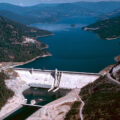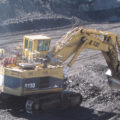[ad_1]
The USGS has completed an oil and gas estimate for the Bakken and Three Forks Formations in the Williston Basin of Montana and North Dakota. The estimate includes 4.3 billion barrels of unconventional oil and 4.9 trillion cubic feet of unconventional natural gas in the two formations. This assessment updates the 2013 USGS assessment of the Williston Basin.
“This assessment is the latest in a long line of work we’ve conducted in the Williston Basin,” said Sarah Ryker, USGS Associate Director for Energy and Minerals. “The Williston Basin has, in many ways, mirrored our broader energy work. What began with assessments of potential energy resources has grown to encompass both energy and water production, infrastructure and impacts, demonstrating the importance of both to the regional and national economies.”
A substantial amount of drilling (over 11,000 wells) has occurred in the basin since 2013, resulting in both more production and more knowledge of the basin’s resources. The USGS assessment focuses on areas where less drilling has occurred and less is known about potential resources.
“The USGS assessment is of undiscovered resources; in other words, it’s a science-based estimate of what may be discovered in the basin in the future,” said Ryker. “It’s different from – and complementary to – industry production numbers, which focus on the known or discovered resource. Our research focuses on areas of uncertainty.”
This assessment also contributes to an ongoing USGS effort to better understand interactions and dependencies between energy resources and water resources. In 2016, the USGS conducted an assessment of the water and proppant requirements and water production associated with potential future production of undiscovered oil and gas resources in the Williston Basin’s Three Forks and Bakken Formations.
In addition, the USGS has published geochemical data from water samples taken during hydraulic fracturing (fracking) of unconventional oil wells in the Bakken and Three Forks Formations.
This assessment was conducted based on a peer-reviewed, publicly available methodology that is used for all USGS oil and gas assessments. This allows an apples-to-apples comparison for USGS assessments across the country and over time.
This assessment is for undiscovered, technically recoverable resources. It includes estimates of continuous resources.
Conventional resources are those that have collected into discrete accumulations, are buoyant by nature, and can be extracted using traditional techniques. These contrast with continuous resources, which are spread throughout a rock layer across large areas of a petroleum basin and typically require enhanced recovery techniques such as hydraulic fracturing.
Technically recoverable resources are those that can be produced using today’s standard industry practices and technology. These are different than economic reserves, which are those quantities of oil and gas that can be produced profitably.
Undiscovered resources are those that are estimated to exist based on geologic, geophysical and geochemical information for the assessed rock layers. Undiscovered resources are contrasted with proven reserves, which are those quantities of oil and gas that have been confirmed to exist via drilling and production.
The USGS is the only provider of publicly available estimates of undiscovered, technically recoverable oil and gas resources of onshore lands and offshore state waters. The USGS’s Williston Basin assessments were undertaken as part of part of our work to more routinely assess oil and gas resources, the water resources associated with the petroleum and the water and proppant quantities required to extract the petroleum.
The new assessments of the Williston Bason can be accessed here and associated data releases can be found here. To find out more about USGS energy assessments and other energy research, please visit the USGS Energy Resources Program website and follow us on Twitter.
[ad_2]
Source link
- Warmer water could cool Montana’s trout fishing economy - September 7, 2022
- Water Released from Crystallizing Magma can Trigger Earthquakes in Yellowstone - September 5, 2022
- Thermal Infrared Remote Sensing at Yellowstone 101 - August 29, 2022




